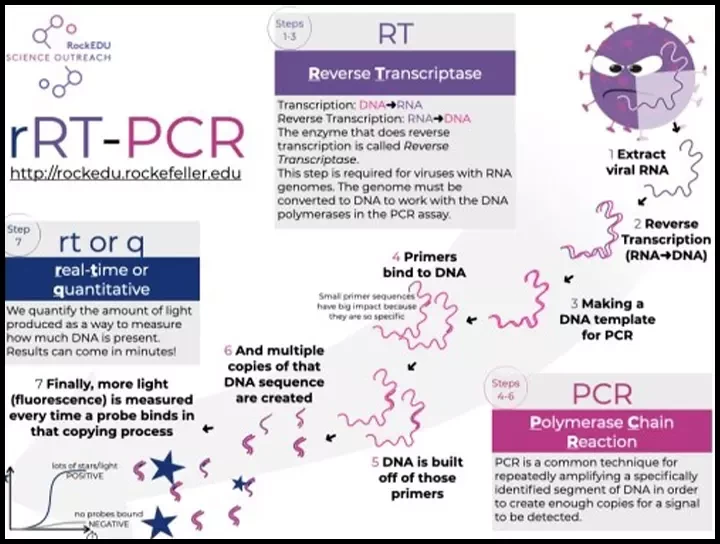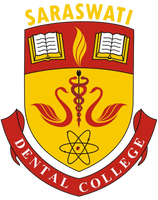
RT-PCR is reverse transcription (RT) polymerase chain reaction (PCR). Let’s remind ourselves that PCR is the amplification of DNA using a thermo-stable DNA polymerse enzyme, template DNA, and single-stranded DNA oligonucleotide primers, which define the region to be amplified. The reverse transcription reaction precedes the PCR step. It turns RNA into single-stranded DNA by reverse transcription using reverse transcriptase and DNA primer that triggers the starting point of the reverse transcription reaction. Typically, that primer is either composed of oligo-dT (i.e. TTTTTTTTTT…) or random hexamer DNA, or a target RNA-specific oligonucleotide sequence. The result of the RT reaction is a single-stranded DNA molecule, often called cDNA (copy DNA), that will act as the template for the PCR reaction to follow. So whereas PCR amplifies a target DNA, RT-PCR starts with RNA and amplifies it into a DNA copy. RT-PCR is widely used for RNA sequencing to determine the level of RNA transcripts inside cells, cloning reading frames of genes, etc.PCR is used in many areas of biology and medicine, including molecular biology research, medical diagnostics, and even some branches of ecology.
Taq polymerase-
Like DNA replication in an organism, PCR requires a DNA polymerase enzyme that makes new strands of DNA, using existing strands as templates. The DNA polymerase typically used in PCR is called Taq polymerase, after the heat-tolerant bacterium from which it was isolated (Thermus aquaticus).T. aquaticus lives in hot springs and hydrothermal vents. Its DNA polymerase is very heat-stable and is most active around 70°C (a temperature at which a human or E. coli DNA polymerase would be nonfunctional). This heat-stability makes Taq polymerase ideal for PCR. As we'll see, high temperature is used repeatedly in PCR to denature the template DNA or separate its strands.
PCR primers-
Like other DNA polymerases, Taq polymerase can only make DNA if it's given a primer, a short sequence of nucleotides that provides a starting point for DNA synthesis. In a PCR reaction, the experimenter determines the region of DNA that will be copied, or amplified, by the primers she or he chooses.PCR primers are short pieces of single-stranded DNA, usually around 2020 2020 nucleotides in length. Two primers are used in each PCR reaction, and they are designed so that they flank the target region (region that should be copied). That is, they are given sequences that will make them bind to opposite strands of the template DNA, just at the edges of the region to be copied. The primers bind to the template by complementary base pairing.
Template DNA:
5' TATCAGATCCATGGAGT...GAGTACTAGTCCTATGAGT 3'
3' ATAGTCTAGGTACCTCA...CTCATGATCAGGATACTCA 5'Primer
When the primers are bound to the template, they can be extended by the polymerase, and the region that lies between them will get copied.
Both primers, when bound, point “inward” – that is, in the 5’ to 3’ direction towards the region to be copied. Like other DNA polymerases, Taq polymerase can only synthesize DNA in the 5’ to 3’ direction. When the primers are extended, the region that lies between them will thus be copied.
The steps of PCR-
The key ingredients of a PCR reaction are Taq polymerase, primers, template DNA, and nucleotides (DNA building blocks). The ingredients are assembled in a tube, along with cofactors needed by the enzyme, and are put through repeated cycles of heating and cooling that allow DNA to be synthesized.
The basic steps are:
Denaturation (96°C): Heat the reaction strongly to separate, or denature, the DNA strands. This provides a single-stranded template for the next step.
Annealing ( 5555 5555 - 6565 6565°C): Cool the reaction so the primers can bind to their complementary sequences on the single-stranded template DNA.
The extension (72°C): Raise the reaction temperatures so Taq polymerase extends the primers, synthesizing new strands of DNA.
This cycle repeats 2525 2525 - 3535 3535 times in a typical PCR reaction, which generally takes 22 22 - 44 44 hours, depending on the length of the DNA region being copied. If the reaction is efficient (works well), the target region can go from just one or a few copies to billions. That’s because it’s not just the original DNA that’s used as a template each time. Instead, the new DNA that’s made in one round can serve as a template in the next round of DNA synthesis. There are many copies of the primers and many molecules of Taq polymerase floating around in the reaction, so the number of DNA molecules can roughly double in each round of cycling.
Using gel electrophoresis to visualize the results of PCR-
The results of a PCR reaction are usually visualized (made visible) using gel electrophoresis. Gel electrophoresis is a technique in which fragments of DNA are pulled through a gel matrix by an electric current, and it separates DNA fragments according to size. A standard, or DNA ladder, is typically included so that the size of the fragments in the PCR sample can be determined.
DNA fragments of the same length form a "band" on the gel, which can be seen by the eye if the gel is stained with a DNA-binding dye.
A DNA band contains many, many copies of the target DNA region, not just one or a few copies. Because DNA is microscopic, lots of copies of it must be present before we can see it by eye. This is a big part of why PCR is an important tool: it produces enough copies of a DNA sequence that we can see or manipulate that region of DNA. Applications of PCR-Using PCR, a DNA sequence can be amplified millions or billions of times, producing enough DNA copies to be analyzed using other techniques. For instance, the DNA may be visualized by gel electrophoresis, sent for sequencing, or digested with restriction enzymes and cloned into a plasmid.PCR is used in many research labs, and it also has practical applications in forensics, genetic testing, and diagnostics. For instance, PCR is used to amplify genes associated with genetic disorders from the DNA of patients (or from fetal DNA, in the case of prenatal testing). PCR can also be used to test for a bacterium or DNA virus in a patient's body: if the pathogen is present, it may be possible to amplify regions of its DNA from a blood or tissue sample.


No Any Replies to “RT-PCR”
Leave a Reply